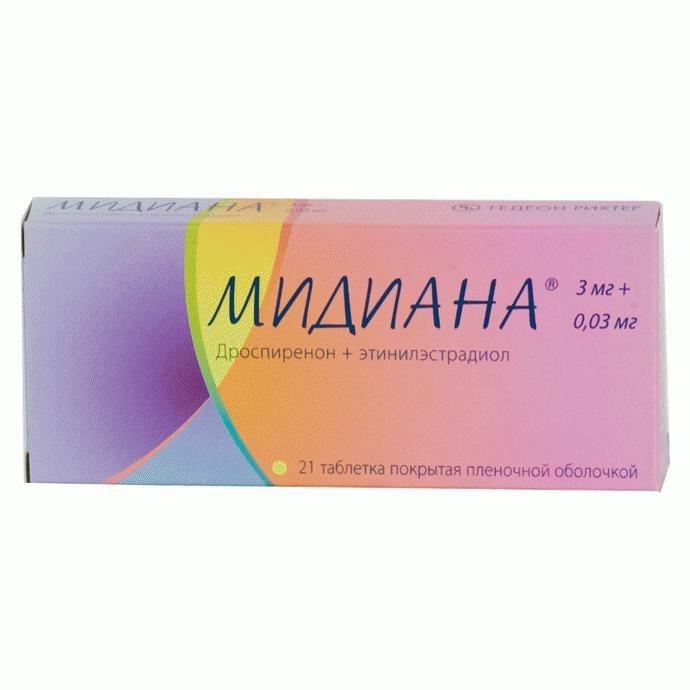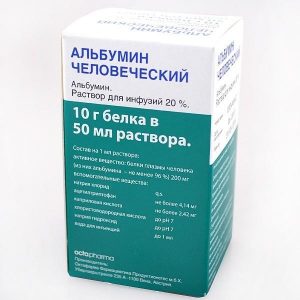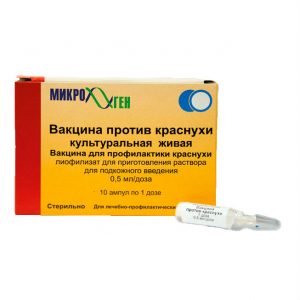Description
Release form
Film-coated tablets
Packaging
There are 21 tablets in a blister pack. In the package 1 blister.
Pharmacological action
Midian is a combined oral contraceptive containing ethinyl estradiol and drospirenone. The contraceptive effect is based on the interaction of various factors, the most important of which are the inhibition of ovulation and endometrial changes.
At a therapeutic dose, drospirenone also has antiandrogenic and weak antimineralocorticoid properties. It does not have estrogenic, glucocorticoid and antiglucocorticoid activity. This provides drospirenone with a pharmacological profile, similar to natural progesterone.
There is evidence of a reduction in the risk of developing endometrial and ovarian cancer with combined oral contraceptives.
Pharmacokinetics
Drospirenone
Absorption
When taken orally, drospirenone is rapidly and almost completely absorbed. Cmax of the active substance in serum, equal to 37 ng / ml, is achieved 1-2 hours after a single dose. Bioavailability ranges from 76% to 85%. Eating does not affect the bioavailability of drospirenone.
Distribution of
During a single cycle of Cssmax, drospirenone in serum is about 60 ng / ml and is reached after 7-14 hours. A 2-3-fold increase in drospirenone concentration is noted. A further increase in the serum concentration of drospirenone is observed after 1-6 cycles of administration, after which no increase in concentration is observed.
After oral administration, a two-phase decrease in the concentration of drospirenone in serum is observed, which is characterized by T1 / 2 1.6 ± 0.7 hours and 27.0 ± 7.5 hours, respectively.
Drospirenone binds to serum albumin and does not bind to sex hormone-binding globulin (SHBG) and corticosteroid-binding globulin (transcortin). Only 3-5% of the total serum concentration of the active substance is free hormone. The increase in SHBG induced by ethinyl estradiol does not affect the binding of drospirenone to serum proteins.
The average apparent Vd is 3.7 ± 1.2 L / kg.
Metabolism
After oral administration, drospirenone undergoes significant metabolism. Most plasma metabolites are acid forms of drospirenone, obtained by opening the lactone ring, and 4.5-dihydro-drospirenone-3-sulfate, which are formed without involving the cytochrome P450 system. According to in vitro studies, drospirenone is metabolized with little involvement of cytochrome P450.
Excretion of
The metabolic clearance rate of drospirenone in serum is 1.5 ± 0.2 ml / min / kg. Drospirenone is excreted only in trace amounts unchanged. Drospirenone metabolites are excreted by the kidneys and through the intestines in a ratio of approximately 1.2: 1.4. T1 / 2 for excretion of metabolites by the kidneys and through the intestines is approximately 40 hours.
Pharmacokinetics in special clinical cases of
Css of drospirenone in serum in women with mild renal failure (CC 50-80 ml / min) was comparable to that in women with normal renal function (CC> 80 ml / min). The serum drospirenone concentration was on average 37% higher in women with an average degree of renal failure (CC 30-50 ml / min) compared to that in women with normal renal function. Drospirenone therapy was well tolerated in women with mild to moderate renal failure.
Treatment with drospirenone did not have a clinically significant effect on serum potassium concentration.
In women with moderate liver failure (Child-Pugh class B classification), the average plasma concentration curve did not match that in women with normal liver function. The Cmax values observed in the phase of absorption and distribution were the same. At the end of the distribution phase, the drop in drospirenone concentration was about 1. 8 times higher in volunteers with moderate liver failure compared with people with normal liver function. After a single dose, the total clearance (Cl / F) in volunteers with moderate liver failure was reduced by about 50% compared with people with normal liver function
The marked decrease in clearance of drospirenone in volunteers with moderate liver failure did not lead to any significant differences in in relation to the concentration of potassium in serum.
Even with diabetes mellitus and simultaneous treatment with spironolactone (two factors that can provoke hyperkalemia in a patient), there was no increase in serum potassium concentration above VGN. Can conclude that the combination of drospirenone / ethinyl estradiol is well tolerated by patients with moderate hepatic impairment (class B according to the Child-Pugh classification).
Ethinyl estradiol
Absorption
Ethinyl estradiol after oral administration is rapidly and completely absorbed. Cmax after a single dose of 30 μg is achieved after 1-2 hours and is about 100 pg / ml. For ethinyl estradiol, a significant first-pass effect with high individual variability is expressed. Absolute bioavailability varies and is approximately 45%.
Distribution of
A state of equilibrium concentration is achieved during the second half of the treatment cycle.
The apparent Vd is about 5 L / kg, the connection with plasma proteins is about 98%.
Ethinyl estradiol induces the synthesis of SHBG and transcortin in the liver. With a daily intake of 30 μg of ethinyl estradiol, the plasma concentration of SHBG rises from 70 nmol / L to about 350 nmol / L.
Ethinyl estradiol passes into breast milk in small amounts (approximately 0.02% of the dose).
Metabolism
Ethinyl estradiol is completely metabolized. The metabolic clearance rate is 5 ml / min / kg.
Excretion
Ethinyl estradiol is practically not excreted unchanged. Ethinyl estradiol metabolites are excreted by the kidneys and through the intestines in a ratio of 4: 6. T1 / 2 metabolites is approximately 1 day. The elimination T1 / 2 is 20 hours.
Indications
Contraception.
Contraindications
Midian should not be prescribed if any of the conditions listed below is present. If any of these conditions develops for the first time while taking the drug, immediate withdrawal is required.
– thrombosis (venous and arterial) and thromboembolism currently or in history (including deep vein thrombosis, pulmonary embolism, myocardial infarction), cerebrovascular disorders of
– conditions preceding thrombosis (including transient ischemic attacks, angina pectoris) at present or in the history of
– multiple or pronounced risk factors for venous or arterial thrombosis, including damage to the valvular apparatus of the heart, heart rhythm disturbances, diseases of the vessels of the brain or coronary arteries
– uncontrolled arterial hypertension
– migraine with focal neurological symptoms at present or in the history of
– diabetes mellitus with vascular complications
– pancreatitis with severe hypertriglyceridemia liver disease (before normalization of liver tests)
– currently or in the history of
liver tumors (benign or malignant) – severe renal failure, acute renal failure
– identified malignant hormone-dependent diseases (including genital organs or mammary glands) or suspected
– vaginal bleeding of unknown origin
– pregnancy or suspected
– lactation period
– smoking over the age of 35
– hypersensitivity to any component of the drug.
Caution is advised to use Midian in the following conditions: – risk factors for thrombosis and thromboembolism (smoking under the age of 35 years, obesity)
– dyslipoproteinemia
– controlled arterial hypertension
– migraine without focal neurological symptoms of heart disease – a hereditary predisposition to thrombosis (thrombosis, myocardial infarction or cerebrovascular accident at a young age in any of the next of kin)
– diseases in which peripheral circulation disorders (diabetes, systemic lupus erythematosus, hemolytic-uremic syndrome, Crohn’s disease, ulcerative colitis, sickle cell disease anemia, superficial vein phlebitis)
– hereditary angioneurotic edema
– hypertriglyceridemia
– liver disease
– diseases that first appeared or worsened during pregnancy and or against the background of previous use of sex hormones (including jaundice and / or itching associated with cholestasis, cholelithiasis, otosclerosis with impaired hearing, porphyria, herpes during pregnancy, a history of minor chorea (Sydenham disease), chloasma, postpartum period).
Use during pregnancy and lactation
During pregnancy and during lactation, the use of the drug Midian is contraindicated. If pregnancy has occurred against the background of hormonal contraception, immediate withdrawal of the drug is necessary.
The few available data on the unintended use of combined oral contraceptives indicate a lack of teratogenic effect and an increased risk for children and women during childbirth.
Combined oral contraceptives affect lactation, may decrease the amount and alter the composition of breast milk. Small amounts of hormonal contraceptives or their metabolites are found in milk during hormonal contraception and may affect the baby. The use of combined oral contraceptives is possible after the complete cessation of breastfeeding.
Composition
1 tablet contains:
active ingredients:
ethinyl estradiol 30 ?g,
drospirenone 3 mg,
excipients:
lactose monohydrate,
corn starch, srdl krdl strd, srdlkrd
Opadry II white 85G18490 (polyvinyl alcohol, titanium dioxide, macrogol 3350, talc, soy lecithin).
Side effects of
Irregular bleeding (spotting or breakthrough bleeding) may occur with combined oral contraceptives, especially during the first months of use.
Against the background of taking combined oral contraceptives in women, other undesirable effects were also observed, the relationship of which with the use of drugs was not confirmed, but also not refuted.
From the digestive system: often – nausea, abdominal pain infrequently – vomiting, diarrhea.
From the side of the central nervous system: often – asthenic syndrome, headache, decreased mood, mood swings, nervousness infrequently – migraine, decreased libido rarely – increased libido.
From the side of the organ of vision: rarely – intolerance to contact lenses (discomfort when wearing them).
From the reproductive system: often – pain in the mammary glands, engorgement of the mammary glands, menstrual irregularities, candidiasis of the vagina, uterine bleeding infrequently – breast hypertrophy rarely – vaginal discharge, discharge from the mammary glands.
From the skin and its appendages: often – acne infrequently – rash, urticaria, rarely – erythema nodosum, erythema multiforme.
Other: often – weight gain is infrequent – fluid retention is rare – weight loss, hypersensitivity reactions.
As with other combined oral contraceptives, rare cases of thrombosis and thromboembolism are possible.
In women with hereditary angioedema, estrogen intake may cause or aggravate its symptoms.
Drug Interactions
The interaction between oral contraceptives and other drugs can lead to breakthrough uterine bleeding and / or decreased contraceptive reliability. The following types of interaction are described in the literature.
Effect on liver metabolism
Some drugs (phenytoin, barbiturates, primidone, carbamazepine and rifampicin), due to the induction of microsomal enzymes, can increase the clearance of sex hormones. Perhaps the same effect of oxcarbazepine, topiramate, felbamate, ritonavir, griseofulvin and herbal remedies based on St. John’s wort perforated.
Possible effects of HIV protease inhibitors (e.g. ritonavir) and non-nucleoside reverse transcriptase inhibitors (e.g. nevirapine) and their combinations on metabolism in the liver.
Effect on enterohepatic recirculation
Clinical observations show that the simultaneous use of certain antibiotics, such as penicillins and tetracyclines, reduces enterohepatic recirculation of estrogens, which can lead to a decrease in the concentration of ethinyl estradiol.
Women taking any of the above drugs should use the barrier method of contraception in addition to Midian or switch to any other method of contraception. Women receiving continuous treatment with drugs containing active substances that affect microsomal liver enzymes must additionally use the non-hormonal method of contraception within 28 days after their cancellation. Women taking antibiotics (except rifampicin or griseofulvin) should temporarily use the barrier method of contraception in addition to the combined oral contraceptive, both during the administration of the drug and within 7 days after its withdrawal. If concomitant use of the drug is started at the end of taking the package of Midian, the next package should be started without the usual interruption. The main metabolism of drospirenone in human plasma is carried out without the involvement of the cytochrome P450 system. Inhibitors of this enzyme system, therefore, do not affect the metabolism of drospirenone.
Effect of Midian on other medicines
Oral contraceptives may affect the metabolism of other medicines. In addition, their concentrations in plasma and tissues can vary: both increase (for example, cyclosporin) and decrease (for example, lamotrigine).
Based on the results of in vitro inhibition studies and in vivo interaction studies in female volunteers taking omeprazole, simvastatin and midazolam as substrate indicators, the effect of 3 mg drospirenone on the metabolism of other active substances is unlikely.
Other interactions
There is a theoretical possibility of increasing the concentration of serum potassium in women receiving oral contraceptives simultaneously with other drugs that increase the concentration of potassium in the blood serum: ACE inhibitors, angiotensin II receptor antagonists, some NSAIDs (e.g. indomethacin), potassium-sparing diuretics and aldosterone. However, in the study, assessing the interaction of an ACE inhibitor with a combination of drospirenone + ethinyl estradiol in women with moderate arterial hypertension, there was no significant difference between serum potassium concentrations in women receiving enalapril and placebo.
Laboratory testing
Taking hormonal contraceptives may affect the results of individual laboratory tests, including biochemical indicators of liver, thyroid, adrenal and kidney function, as well as plasma transport protein levels such as corticosteroid-binding globulin and lipid / lipoprotein fractions, carbohydrate metabolism blood and fibrinolysis. Changes usually occur within laboratory norms.
Due to its small antimineralocorticoid activity, drospirenone increases renin activity and plasma aldosterone concentrations.
Overdose
There is no information on an overdose of drospirenone and ethinyl estradiol. However, nausea, vomiting, and vaginal bleeding / bleeding may occur.
Treatment: There is no specific antidote. Symptomatic treatment should be carried out.
Storage conditions .
Shelf life
2 years.
Terms and conditions
prescription
dosage form
tablets
At
value Prescribing
For women of childbearing age, Adults as prescribed by a doctor
Gideon Richter, Hungary




